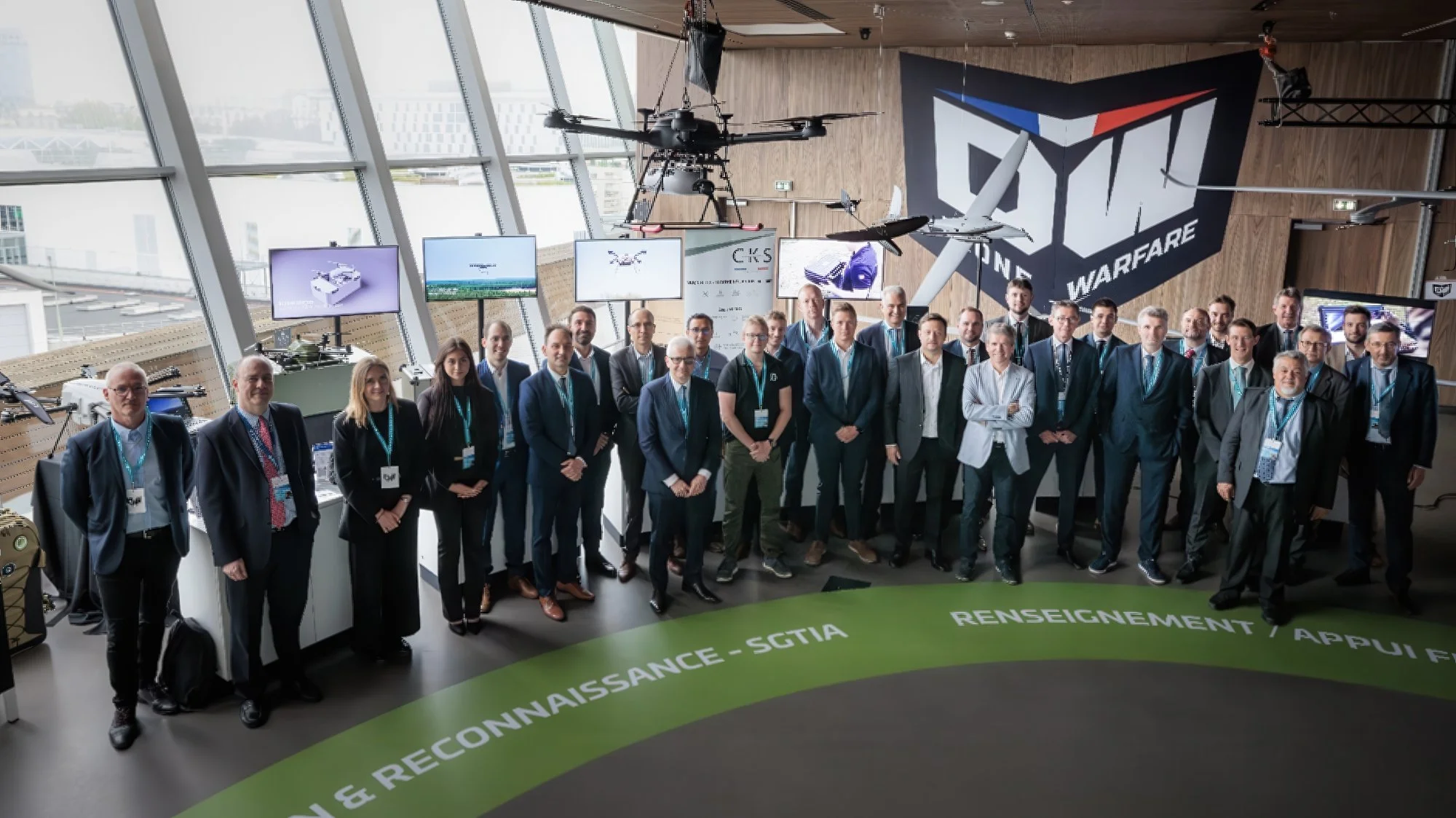Thales Unveils AI-Driven Drone Swarms: Enhanced Autonomy & Mission Flexibility
Image Source: Thales
Thales, a leading name in defense innovation, has taken a significant step forward in deploying AI-powered drone swarms. These drone swarms utilize advanced autonomy, interoperability, and integration to redefine the landscape of military operations. In a recent demonstration, Thales showcased the effectiveness of its COHESION demonstrator, a sophisticated AI-based system that allows military drone swarms to operate with unparalleled flexibility and resilience, all while maintaining human control during crucial mission phases.
[Read More: United by AI: 20 Drones Join Forces to Battle Wildfires]
AI-Powered Drone Swarms: Overcoming Traditional Limitations
Traditionally, military drones faced two main challenges: the need for one operator per drone and reliance on constant, secure communication links. Thales aims to resolve these issues by introducing a new level of autonomy within drone swarms. The COHESION demonstrator enables drones to operate independently without constant datalink communication, making them more adaptable in electronic warfare scenarios where signals may be jammed.
The drones, supported by AI-driven architecture, can perceive their environment, exchange information, analyze enemy actions, and prioritize tasks. This capability allows for collaborative strategies and improved trajectory planning, which not only enhances operational resilience but also accelerates the Observe, Orient, Decide, Act (OODA) loop, making decision-making faster and more effective on the battlefield.
[Read More: AI Can Handle 100 Drones at a Time!]
COHESION Demonstrator: A Closer Look at Capabilities
The COHESION demonstrator stands out due to its unique system architecture, which enables operators to dynamically adjust the autonomy levels of the drones based on mission phases. This flexible approach proves essential in contested environments, as it mitigates the risk of communication disruption by electronic warfare measures or GNSS jamming.
The drones within the swarm can perform independent operations, whether individually or collectively, without compromising mission objectives. They can analyze targets, share intelligence, and implement collaborative tactics, enhancing both mission success rates and force protection.
[Read More: Defense Dynamics: How Quantum Systems Is Redefining AI in Military Drones]
Advanced Drone Specifications: Spy’Ranger 330 and TOUTATIS
Thales’s commitment to drone warfare extends to the development of specific drone systems designed for various mission types:
Spy’Ranger 330: A critical asset in the French Army’s SMDR program, this unmanned air system is designed for short-range reconnaissance and surveillance. Equipped with state-of-the-art sensors and communication systems, the Spy’Ranger 330 offers enhanced situational awareness and real-time data transmission, supporting decision-making in rapidly evolving combat scenarios.
TOUTATIS Loitering Munition: Following Thales’s acquisition of Aeromapper in 2024, the TOUTATIS system was added to its drone lineup. It acts as a loitering munition capable of identifying and neutralizing targets autonomously. The system’s versatility allows it to adapt its behavior based on changing mission requirements, ensuring precise engagement even in complex operational conditions.
[Read More: AI-Powered Drones Soar: Market Expected to Skyrocket to $206.9 Billion by 2033]
Thales’s AI Strategy: cortAIx and OpenDRobotics
Thales’s investment in AI development is evident through initiatives like cortAIx, established in early 2024 to advance trusted AI solutions for critical defense systems. This initiative aims to streamline AI integration, address cybersecurity challenges, and optimize data analysis from sensors and decision-support tools.
In addition, the launch of OpenDRobotics in 2023 underscores Thales’s focus on human-in-the-loop systems that combine AI with various robotics technologies. By unifying aerial and ground-based unmanned assets, OpenDRobotics builds comprehensive mission systems that maintain human oversight while leveraging AI for optimized performance.
[Read More: Chinese Researchers Develop Feather-Light Drone with Near-Infinite Flight Potential]
Human-in-the-Loop Autonomy: Ethical AI Integration
A key principle in Thales’s approach is "TrUE AI", which emphasizes ethical AI use and ensures that humans remain in control of critical decisions at all times. This “human-in-the-loop” concept combines AI autonomy with human supervision, reducing cognitive strain while maintaining control over decisive actions, ensuring safety, security, and ethical conduct in warfare.
[Read More: AI Warfare: Autonomous Weapons Changing the Battlefield]
Source: Asia-Pacific Defence Reporter









